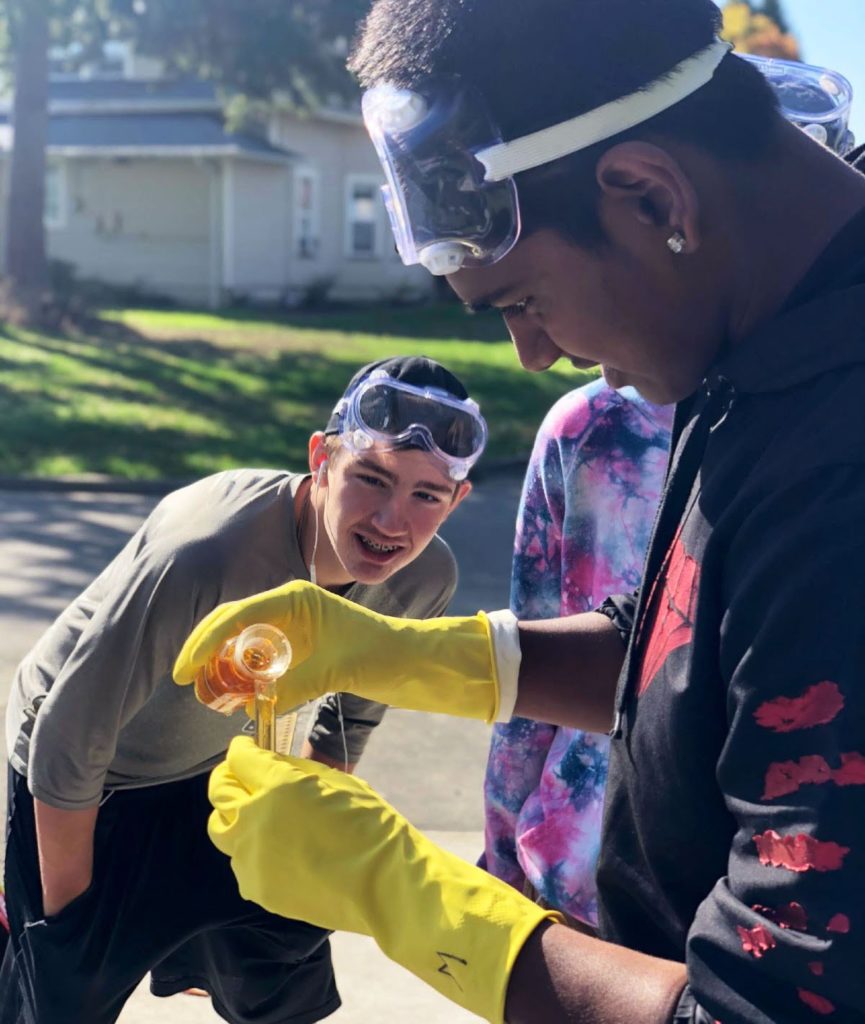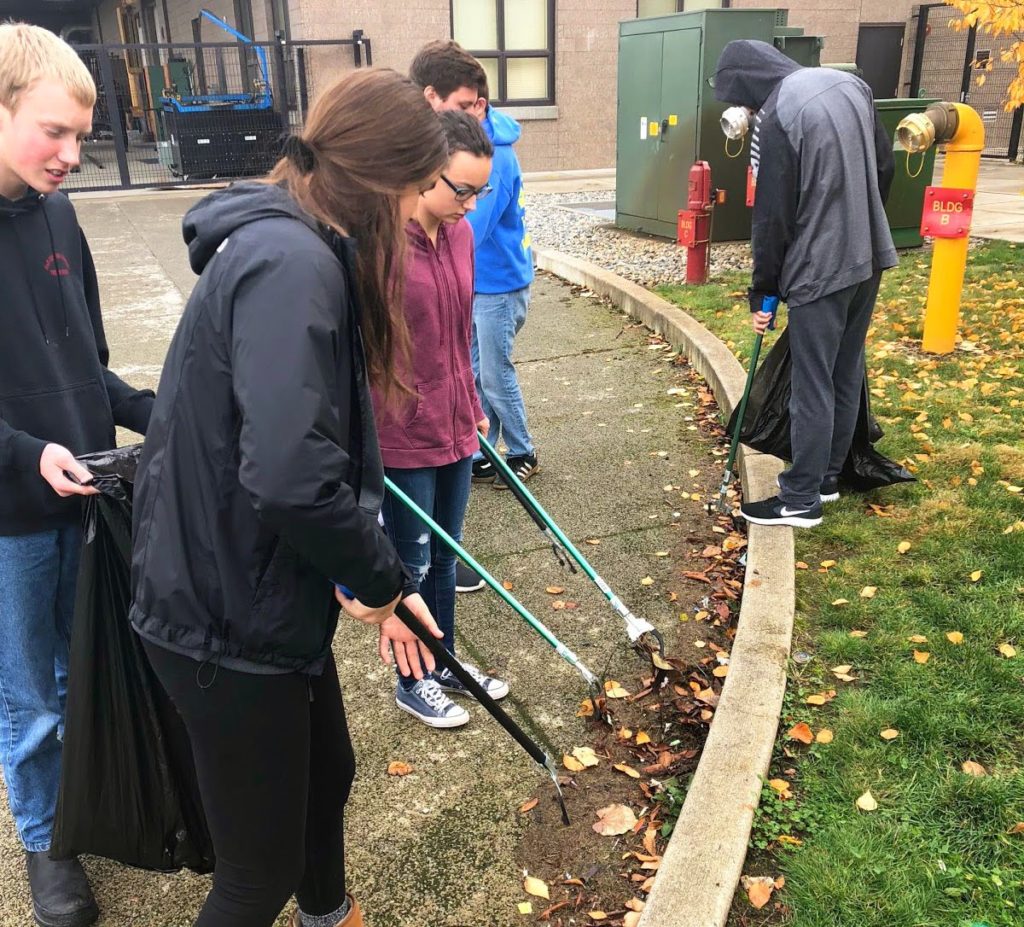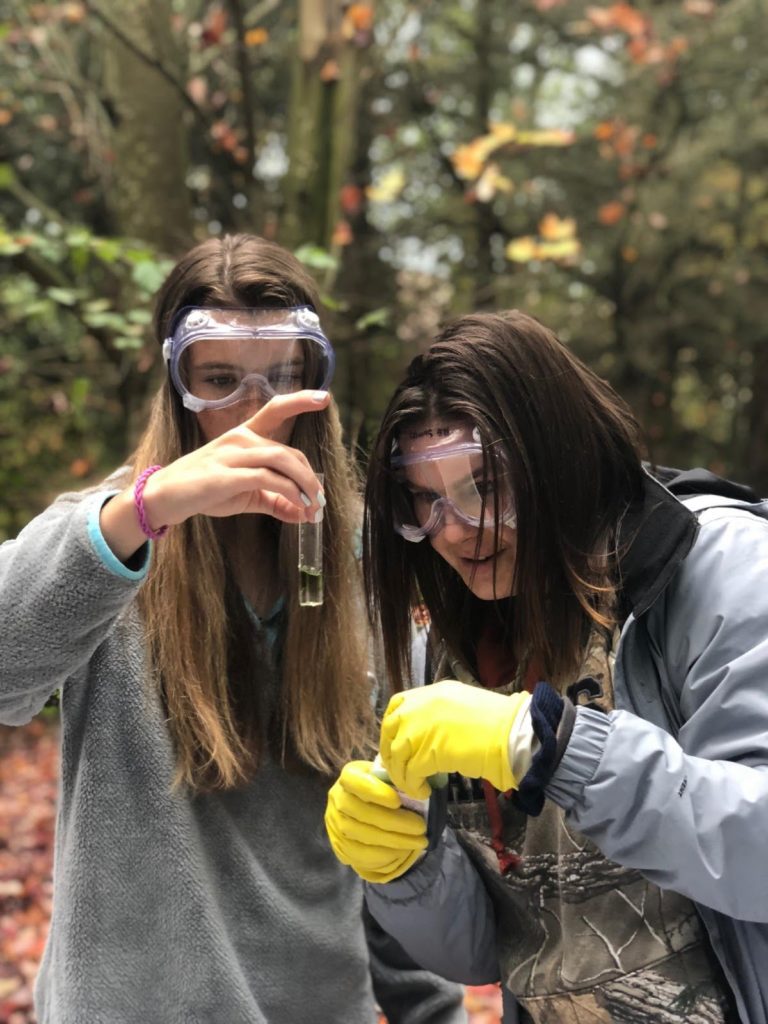Tracing orca population decline down the food chain
Looking through the lens of a pressing issue in our region, students in the Young Water Stewards program traced the problem down the food chain, where they reached the orcas’ main food source: Chinook salmon. Unfortunately, Puget Sound Chinook (also known as king salmon) are listed as threatened under the Endangered Species Act, which means they are well on their way to join the southern resident orcas as an endangered species.
Chinook spend the beginning and end of their lives in our watershed, so students were able to identify the connection between land-based pollution and effects on all levels of the Chinook’s food chain. Watershed science — studying the interconnected rivers, storm drains, and every waterway in between that eventually make their way to sea — is the basis of the Young Water Stewards program, and the key to the puzzle of the orcas’ predicament.
Saving the southern residents is a one of our region’s greatest challenges right now. To this end, the program empowers students to take action in their local watershed through an introduction to water quality sampling, non-point source pollution, and “best management practices,” all culminating with a stewardship project. By connecting current pollution facing the Salish Sea, the program engages students on smaller-scale water quality issues in their communities to ultimately make a difference at the regional level.
What do whales, salmon, and shellfish have in common?
Answer:pollution. Pollution — from human land use practices — enters the marine ecosystem of whales, salmon, and shellfish and builds up in their bodies over time.
More than 200 students from Blaine and Meridian High Schools examined the same water quality problem in two different school districts: shellfish bed closures where their watersheds meet the ocean.
With guidance from Blaine teacher Jennifer Wright, we took the Young Water Stewards program to the next level — enriching the curriculum to support national science standards (NGSS) with a 3-dimensional approach for the freshman biology students. In class, students operated watershed and groundwater models because the City of Blaine receives its drinking water from an underground aquifer. Next, they compared two creeks in their watershed: Dakota Creek, a salmon-bearing stream, and Cain Creek, which runs through Blaine and has not seen a salmon in many years. With a firsthand look at their own watershed, students quickly realized how urban environments act as a gauntlet for salmon returning to spawn, loaded with fish passage barriers such as road culverts.

Water Sampling — a scientific assessment of pollution
Chemistry students at Meridian High learned that water’s unique chemical composition gives it the ability to dissolve more substances than any other liquid. This means wherever water goes, whether that be in our bodies or the ecosystem, it carries minerals, nutrients, and harmful substances along with it. Students sampled and analyzed water quality samples from Tenmile Creek to determine their watershed health. On a bus tour of their watershed, students saw livestock and berry farms surrounding Tenmile Creek — and saw the importance of vegetated buffers along the creek from each farm implementing Best Management Practices.
Back in the classroom, the pieces to the orca puzzle fell into place. After taking water samples and seeing firsthand how non-point source pollution enters their watershed, the students recognized that human actions and systems have repercussions that eventually make their way downstream and into the Salish Sea.
Our everyday actions up here on land are causing problems at sea. So what can your average high school student do about it? Equipped with knowledge on water quality issues right where they live, students complete a stewardship action project. This fall, Meridian students made a social media post for their high school and did a campus litter cleanup after a football game. In Blaine, students removed invasive plants and planted native ones, completely transforming the riparian habitat that many students walk by each day. When the program is complete, students have a deeper understanding and the tools to make choices that reflect how they value clean water, and the people and environments that depend on it.

by Natalie Lord, Young Water Stewards Education Specialist

